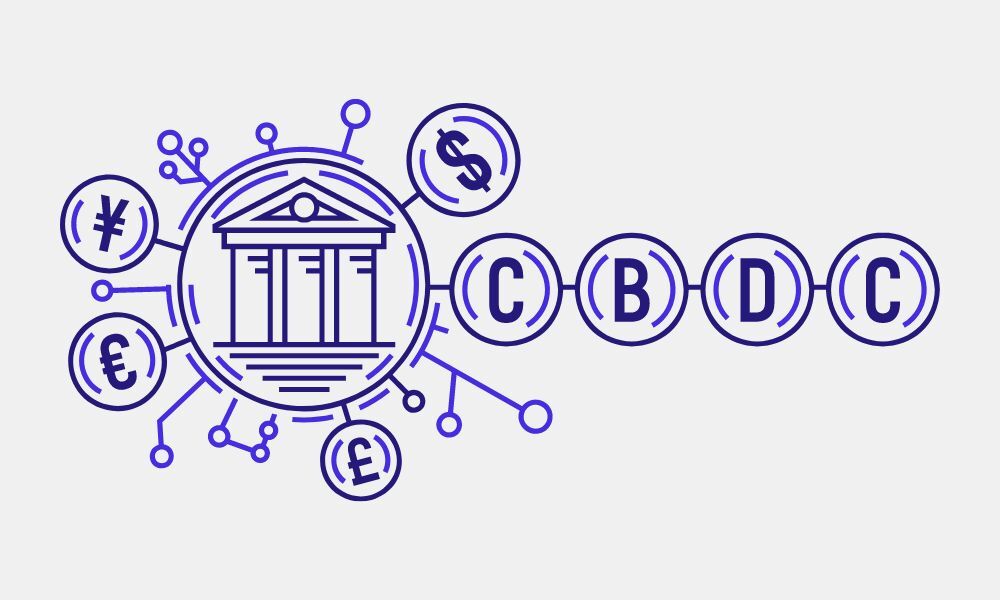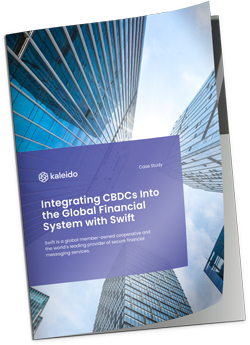

In the ever-evolving world of finance, digital money has emerged as a pivotal innovation, reshaping how we think about transactions, savings, and investments. As we dive into this digital revolution, let's explore the four main types of digital money:
Each has its unique applications and benefits and we’ll outline some of those here in this quick primer.
Cryptocurrencies, led by Bitcoin, are the torchbearers of the digital currency world. Crypto is a decentralized digital asset that operates on a public blockchain and aims for transparency, security, and freedom from central authority control.
Cryptocurrencies have not only introduced the broader world to the power and potential of blockchain but also sparked discussions on the future of decentralized finance (DeFi) and fundamentally altered the concept of money.
Unlike traditional financial systems, cryptocurrencies eliminated the need for intermediaries like banks and governments. They showed how we might democratize access to financial services, allowing direct peer-to-peer transactions, lending, and borrowing without the geographical or socio-economic barriers present in conventional banking.
Cryptocurrencies expanded the definition of assets by introducing digital or virtual assets, which are uniquely identifiable and provide ownership rights through cryptographic keys. This led to innovations such as non-fungible tokens (NFTs) and asset tokenization.
The emergence of cryptocurrencies and the underlying blockchain technology has sparked a reevaluation of financial systems, asset ownership, and the role of trust in economic transactions, paving the way for a new era of digital finance.

CBDCs are a response from central banks to the rise of digital currencies. Crafted to combine the reliability of traditional money with the efficiency of digital money, CBDCs offer a regulated and state-backed alternative to crypto.
Over 130 countries are now experimenting with CBDCs, reflecting a broad recognition by central banks of the need to modernize financial systems with digital technologies. These experiments range from preliminary research and development stages to advanced pilot programs, indicating a varied pace of adoption across different regions. While some countries report promising advancements in enhancing transaction efficiency and financial inclusivity, others face challenges in implementation, ranging from technical hurdles to public skepticism.
The reception of CBDCs varies across cultures, with some communities expressing concerns over privacy, government surveillance, and the potential for financial exclusion of those without digital access. In other regions, there's an embrace of digital currencies as they’re seen as a way to quickly plug into global networks and elevate economies that were traditionally left out of the fold.
The outcome of these experiments could profoundly influence the future of global finance, reshaping how nations interact with currency in the digital age.

Virtual currencies are an interesting evolution in the digital economy because they showcase the potential of entirely digital ecosystems to sustain their forms of value and transaction mechanisms.
By operating within specific online communities or platforms, such as gaming environments or social networks, virtual currencies serve not just as a medium of exchange but also as tools for engagement, loyalty, and community building. They enable the purchase of virtual goods and services, ranging from in-game items to exclusive digital content, illustrating how value can be perceived and exchanged in diverse forms beyond traditional fiat money.
A prime example of virtual currencies is V-Bucks in Fortnite, enabling players to buy in-game items and cosmetics. V-Bucks demonstrates how platform-specific digital currencies not only boost user engagement but also create continuous revenue streams for developers beyond the initial game purchase.
One of the key lessons virtual currencies teach the broader economy is the importance of trust and consensus in value systems. Unlike traditional currencies, which are backed by governments or precious metals, the value of virtual currencies is derived from the collective agreement of their users within a particular ecosystem. This shows how trust can be built and maintained not only through regulatory oversight but also through community engagement and shared digital experiences.
Virtual currencies facilitate fast, secure, and microtransactions without the need for intermediaries and point to new ways of thinking about payment processing, digital identity, and financial inclusion. This is particularly relevant in contexts where traditional banking services are limited or non-existent, offering lessons on creating more inclusive economic systems.

Stablecoins offer a solution to a pressing issue in the cryptocurrency market: volatility. By tying their value to more stable assets, stablecoins aim to provide the efficiency and borderless nature of cryptocurrencies while mitigating the wild price swings that can make daily transactions and long-term financial planning challenging with conventional cryptocurrencies.
In traditional finance, stability is often taken for granted, with currencies issued by governments generally experiencing relatively minor fluctuations in the short term. Stablecoins bring this principle into the digital realm, suggesting that for digital currencies to achieve widespread adoption, they must offer a predictable store of value that users can rely on for day-to-day transactions as well as long-term saving.
Stablecoins have also shown that digital currencies can create a seamless connection between traditional financial systems and the emerging world of cryptocurrency. By offering a stable value that is often pegged to fiat currencies, they provide a familiar anchor for individuals and businesses looking to explore the benefits of digital transactions without fully departing from the conventional financial system.
The mechanisms used to maintain the stability of stablecoins—whether through fiat collateralization, crypto collateralization, or algorithmic mechanisms— requires transparency and regular audits to maintain user confidence and show how some combination of digital tech and citizen oversight could come together in our future economy.
The landscape of digital money is still sorting out, with each type offering unique benefits and distinct challenges.
As we continue to navigate this digital financial frontier, engaging with these currencies—whether through investment, research, or simply staying informed—can offer insights into the future of money. The journey of digital money is just beginning, and its impact on our daily lives, economies, and global transactions promises to be transformative.
If you’re curious about the future of finance and digital currencies or ready to start building a digital currency of your own, schedule a talk with one of our solution architects.
Request exclusive access to our CBDC Sandbox and see how our stack radically simplifies development and testing of digital currencies.
Request a DemoRequest exclusive access to our CBDC Sandbox and see how our stack radically simplifies development and testing of digital currencies.
Request a Demo


Request exclusive access to our CBDC Sandbox and see how our stack radically simplifies development and testing of digital currencies.
Request a DemoRequest exclusive access to our CBDC Sandbox and see how our stack radically simplifies development and testing of digital currencies.
Request a Demo
Your guide to everything from asset tokenization to zero knowledge proofs
Download Now
Learn how Swift, the world’s leading provider of secure financial messaging services, utilizes Kaleido in its CBDC Sandbox project.
Download Now